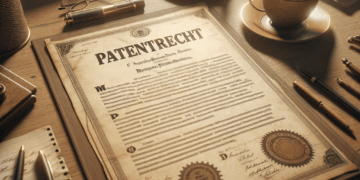Introduction
Patent law is a specialized area of law dealing with the protection of inventions. It enables inventors to obtain the exclusive right to use and exploit their inventions for a certain period of time. This article provides a comprehensive overview of patent law, including its history, the different types of patents, the patent application process, and related challenges.
- Patent law protects inventions and grants inventors exclusive rights of use for 20 years.
- Patent history began in Europe in the 15th century, often with England as its birthplace.
- Three types of patents: Invention patents, utility models and design patents.
- Patentability requires novelty, inventive step and industrial applicability.
- Patent application is filed with the German Patent and Trademark Office(DPMA).
- International agreements such as the EPC and PCT enable global patent protection.
- Patent attorneys provide support with applications and represent clients in the event of patent infringements.
History of patent law
The idea of patent protection goes back a long way. Forms of patent protection already existed in ancient Greece. In modern history, patent law developed in Europe in the 15th century, with England often considered the birthplace of modern patent law. Over the years, patent laws have evolved to reflect technological advances and changing economic conditions.
What is a patent?
A patent is a legal right that grants an inventor the exclusive right to use and exploit an invention for a specified period of time, usually 20 years from the date of filing. During this time, the patent owner can prohibit others from using the invention or grant licenses to use it for a fee.
Types patents
There are several types of patents, including:
- Invention patents: Protect new inventions or discoveries that are technically exploitable.
- Utility models: Protect inventions that have a lower inventive step than required for an invention patent.
- Design patents: Protect the unique appearance of a product.
Patentability
Not every invention can be patented. To be patentable, an invention must be new, involve an inventive step and be susceptible of industrial application. In addition, certain things, such as scientific theories, mathematical methods, and aesthetic creations of form, may not be patented.
The patent application procedure
The patent application procedure begins with the filing of a patent application with the relevant patent office. In Germany, this is the German Patent and Trademark Office (DPMA). The application must contain a description of the invention, claims defining the scope of protection, and drawings, if any. After filing, the Patent Office examines whether the invention meets the criteria for patentability. If this is the case, the patent is granted.
International patents
Since patents are territorial, they only provide protection in the country in which they were granted. For inventors seeking protection in multiple countries, there are international agreements such as the European Patent Convention (EPC) and the Patent Cooperation Treaty (PCT) that allow a single application to seek patent protection in multiple countries.
Enforcement of patents
Once granted, it is the responsibility of the patent owner to enforce its rights. If a third party infringes the patent by using the invention without permission, the patent owner can take legal action to stop the infringement and seek damages.
Challenges and criticism
Patent law faces several challenges. One of these is dealing with rapid technological change, especially in areas such as biotechnology and information technology. There is also criticism that patents can hinder innovation by preventing competitors from researching and developing in certain areas.
Role of patent attorneys
Patent attorneys play a crucial role in patent law. They advise inventors and companies on patent matters, assist in the preparation of patent applications and represent their clients in patent litigation.
Economic importance
Patents are of great importance for the economy. They promote innovation by offering inventors incentives to invest in research and development. Companies often use patents as part of their business strategy to gain competitive advantage and protect their investments.
Conclusion
Patent law is a complex and specialized area of law that grants inventors protection and exclusive rights to their inventions. It must strike a balance between protecting the rights of inventors and promoting innovation and competition. Given the rapid pace of technological change and the globalization of the economy, patent law remains a dynamic and constantly evolving field.





















